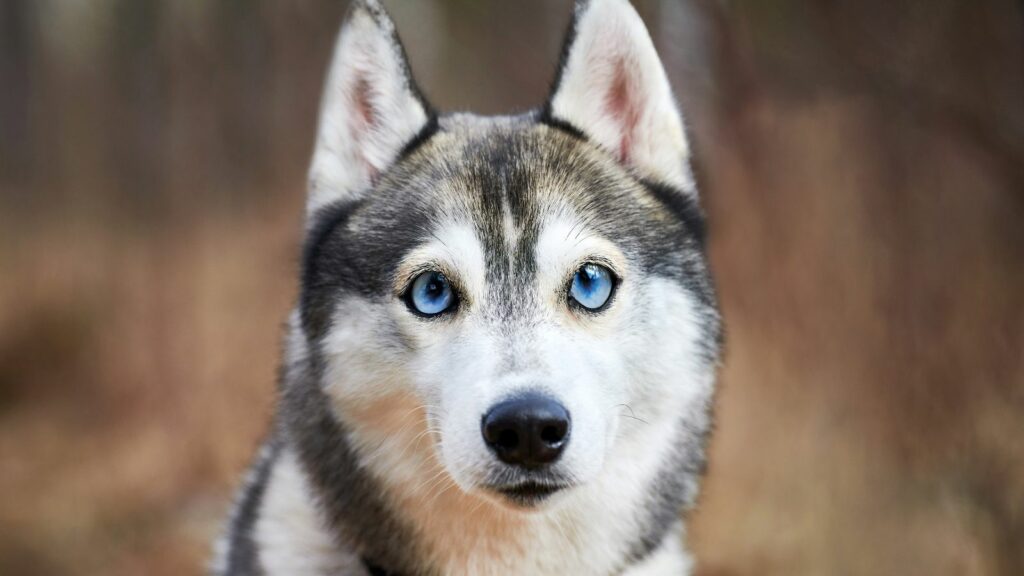Dog lovers worldwide can’t resist the allure of a pooch with striking blue eyes. Whether it’s the icy gaze of a Siberian Husky or the soft stare of an Australian Shepherd, blue eyed dog breeds hold a certain enchantment that’s hard to ignore. This article delves into the captivating world of these unique canine companions.
Blue Eyed Dog Breeds

Dogs acquire their blue eyes as a result of specific genetic conditions. For instance, the Merle gene, present in breeds such as the Australian Shepherd, modifies pigment, creating blue eyes in dogs. The Siberian Husky, famous for its striking blue eyes, carries a separate genetic riddle. It’s a genetic quirk, linked to a non-merle locus, that gifts a Husky its stunning icy gaze, according to an authoritative study by the Ostrander Lab at the National Institutes of Health (NIH).
Additionally, the rare breed, Alaskan Klee Kai, owes its riveting blue eyes to a dominance gene trait. Even Dalmatians might sport a pair of sapphire eyes, due to piebald, a genetic instance causing patches of pigment shortage
Health Considerations
Contrary to popular belief, a dog’s blue eyes aren’t typically indicative of health issues. Dogs naturally bear blue eyes from birth due to a lack of pigment, which alters with age in most breeds, but not all. Exceptions like Huskies and Australian Shepherds retain their blue eyes throughout their lives, and this, too, is natural, not a health concern.

Nevertheless, some genetic factors that lead to blue eyes in canines can trigger health issues. For instance, Merle patterned coats are linked to blue eyes and also potential deafness and eye abnormalities, as per research at Louisiana State University. Therefore, as enchanting as those cerulean eyes might be, it’s crucial for potential pet parents to be aware of potential genetic health risks related to their breed of choice.
Caring for Blue Eyed Dogs
Dietary Needs
Blue eyed dog breeds such as the Australian Shepherd and Siberian Husky largely thrive on high-protein diets. Dogs with active lifestyles need 18% dietary protein, according to the Association of American Feed Control Officials. For instance, the Siberian Husky, a sled-pulling breed, and the Australian Shepherd, a herding breed, both display high energy levels. Thus, a diet rich in quality protein sources like chicken, turkey, salmon, or beef aids in building muscle and body maintenance.
For both puppies and adult dogs of these breeds, balanced nutrition is key. Incorporate essential vitamins, minerals, fats, and carbohydrates into their diet. Also, consider the breed’s specific needs. For Siberian Huskies, diets low in calories and fat can help prevent obesity, a common health condition.
Grooming and Exercise Requirements
The grooming requirements for blue eyed dog breeds can vary. Australian Shepherds, with their dense double coat, need regular brushing, typically about two to three times a week, to prevent matting and excessive shedding. On the flip side, Siberian Huskies have a knack for self-cleaning and require less frequent baths, similar to cats. However, their thick undercoat also necessitates regular combing to manage shedding.

As for exercise, both breeds are known for their high energy levels and require ample physical activity to keep them healthy and content. The Australian Shepherd is an extremely active and agile breed, requiring about 30 to 60 minutes of vigorous exercise daily. It shows its roots in herding work through activities such as fetching, agility training, or even actual herding.
Similarly, the Siberian Husky, as an endurance breed, needs more than just a short walk for exercise. Prolonged jogging, hiking, and sled pulling simulate the husky’s traditional work in sled pulling.
The Allure and Care of Blue-Eyed Dog Breeds
Blue eyed dog breeds like the Australian Shepherd and Siberian Husky are truly captivating with their unique eye color. Understanding their genetics helps potential owners appreciate their uniqueness and the associated health risks. It’s crucial to keep up with regular health check-ups for these breeds. Their care doesn’t stop at admiring their stunning eyes; it extends to meeting their dietary, grooming, and exercise needs.

